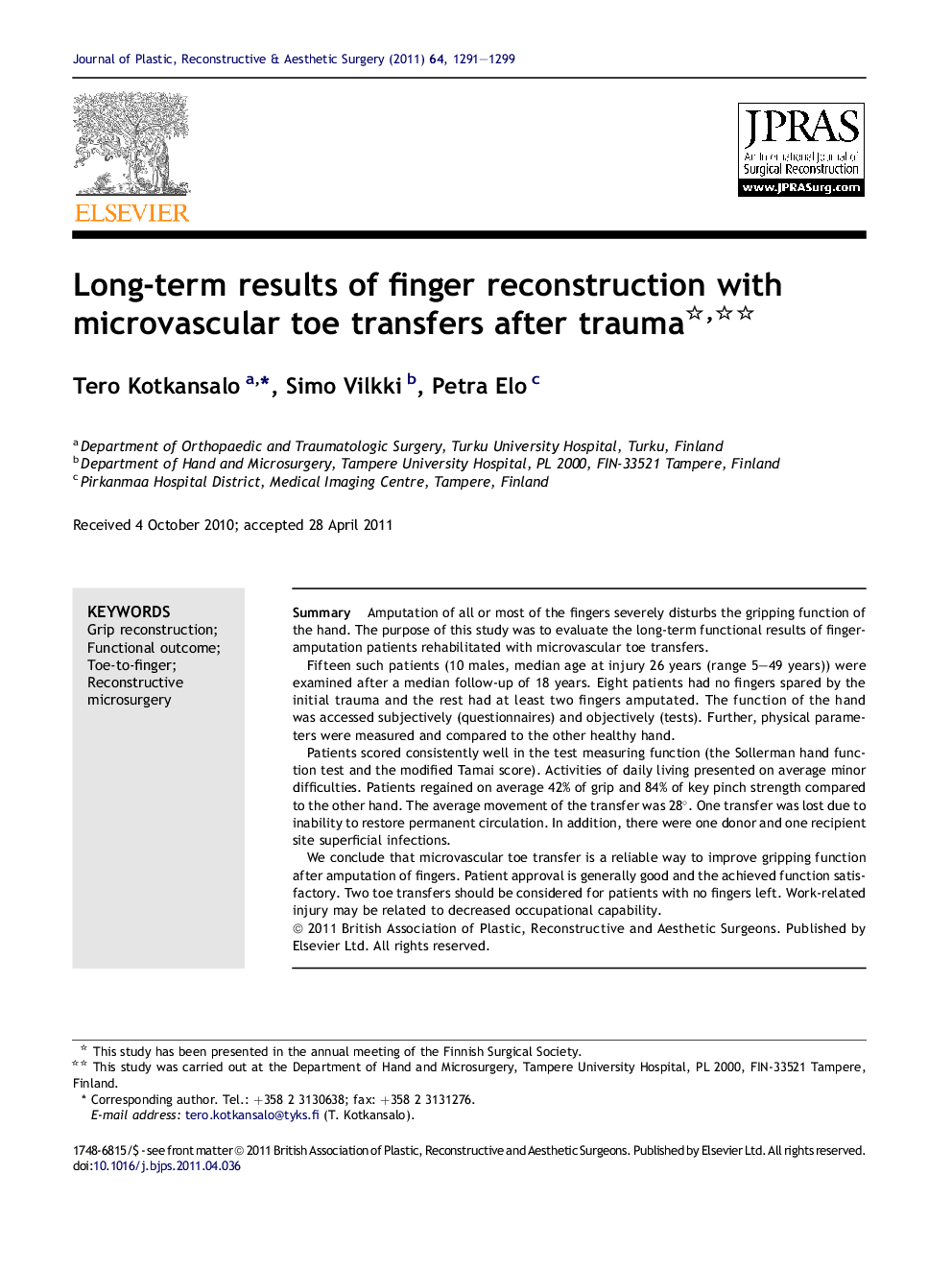| Article ID | Journal | Published Year | Pages | File Type |
|---|---|---|---|---|
| 4120299 | Journal of Plastic, Reconstructive & Aesthetic Surgery | 2011 | 9 Pages |
SummaryAmputation of all or most of the fingers severely disturbs the gripping function of the hand. The purpose of this study was to evaluate the long-term functional results of finger-amputation patients rehabilitated with microvascular toe transfers.Fifteen such patients (10 males, median age at injury 26 years (range 5–49 years)) were examined after a median follow-up of 18 years. Eight patients had no fingers spared by the initial trauma and the rest had at least two fingers amputated. The function of the hand was accessed subjectively (questionnaires) and objectively (tests). Further, physical parameters were measured and compared to the other healthy hand.Patients scored consistently well in the test measuring function (the Sollerman hand function test and the modified Tamai score). Activities of daily living presented on average minor difficulties. Patients regained on average 42% of grip and 84% of key pinch strength compared to the other hand. The average movement of the transfer was 28°. One transfer was lost due to inability to restore permanent circulation. In addition, there were one donor and one recipient site superficial infections.We conclude that microvascular toe transfer is a reliable way to improve gripping function after amputation of fingers. Patient approval is generally good and the achieved function satisfactory. Two toe transfers should be considered for patients with no fingers left. Work-related injury may be related to decreased occupational capability.
